 |
 |
 |
| |
Pharmacodynamics of BI 224436 for HIV-1 in
an in vitro hollow fiber infection model system
|
| |
| |
Reported by Jules Levin
ICAAC Chicago 2011 Sept 17-20
A.N. Brown1, J. McSharry1, R. Kulawy1, C. Fenwick2, R. Bethell2, J. Duan2, J. Kort3, P Robinson3, B. Simoneau2, C. Yoakim2 and G. Drusano1
1University of Florida, Albany, NY, USA , 2Boehringer Ingelheim Ltd., R & D, Laval, Canada, and 3 Boehringer Ingelheim Pharmaceuticals Inc., Ridgefield, Connecticut, USA
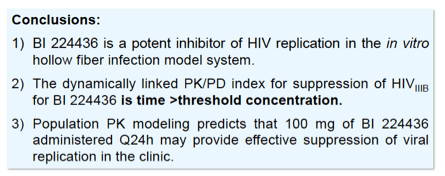
Background
BI 224436 is a novel integrase inhibitor with potent antiviral activity against HIV-11. This compound belongs to a new class of integrase inhibitors, referred to as Non- Catalytic site Integrase inhibitor, that bind to a conserved allosteric pocket on the viral integrase (Figure 1) and acts as a LTR-DNA 3' processing inhibitor.2
Our goal was to identify optimal dosing regimens for BI 224436 that prevent HIV-1 replication using the hollow fiber infection model (HFIM) system.
Figure 1. Crystal structure of the HIV Integrase catalytic core dimer with the NCINI BI-B. BI-B is a structurally related compound to BI 224436 that binds to the LEDGF binding pocket on the integrase catalytic core inhibiting LTR-DNA 3' processing, integrase-LEDGF interaction, and integrase-LTR DNA interaction.
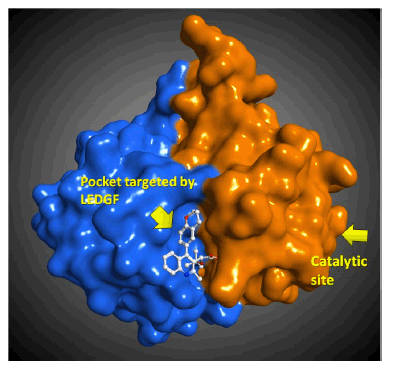
Objectives
1) Evaluate the efficacy of BI 224436 against the IIIB strain of HIV-1 in the hollow fiber system.
2) Determine the most predictive PK/PD index for BI 224436 by a dose fractionation experiment.
3) Predict efficacy of BI 224436 in the clinic using Monte Carlo simulations.
Figure 2. The HFIM System. The HFIM is a dynamic in vitro model that can simulate concentration-time profiles for any dosage regimen. The system contains two compartments, the central reservoir (CR) as the central compartment and the hollow fiber (HF) cartridge as the peripheral compartment. Cells and virus are maintained within the peripheral compartment.
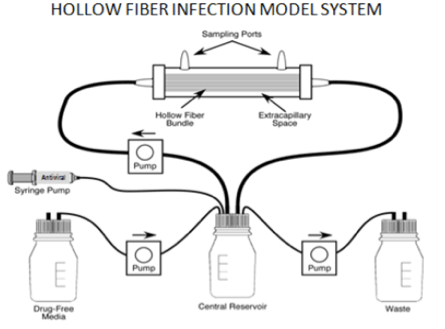
Methods
Protein Binding Assay. Tissue culture flasks were inoculated with 104 HIV-infected H9IIIB cells and 106 uninfected CEM-SS cells in in the presence or absence of 4 mg/dl human serum albumin (HSA) and 1.5 mg/ml of α-1 acid glycoprotein (AGP). Flasks were incubated with various amounts of drug at 37 C, 5% CO2 for 4 days. Antiviral activity was determined by measuring the percentage of cells positive for the p24 antigen using flow cytometry. EC50 values were calculated by fitting a sigmoid Emax model to the data.
HFIM Studies. HF cartridges were inoculated with 108 uninfected CEM-SS cells and 106 HIVIIIB-infected H9 cells.
(A) Dose Ranging Studies: Various concentrations of BI 224436 were added directly to the central reservoir and pumped into the extracapillary space (ECS) via a continuous loop. Fresh medium with or without BI 224436 was added to the system daily. The EC50 value was determined in the HFIM system using FACS analysis values on day 8.
(B) Dose Fractionation Studies: An area under the concentration time curve (AUC) exposures equivalent to 13 nM continuous infusion (312 nM*h over 24 hrs) and 19 nM continuous infusion (456 nM*h over 24 hrs) for BI 224436 was evaluated at three different schedules of administration.
Schedule of Administration: Continuous Infusion
Q24h as a 1-h infusion, or
Q12h as a 1-h infusion
A half-life of 7h was simulated for BI 224436 based on single dose data in humans3.
For dose range and dose fractionation studies, serial drug concentrations were determined in the central reservoir over the first 48h and quantified by LC-MS/MS. Drug effect was determined from samples (~ 0.5 mls) harvested from the ECS as depicted in Figure 3.
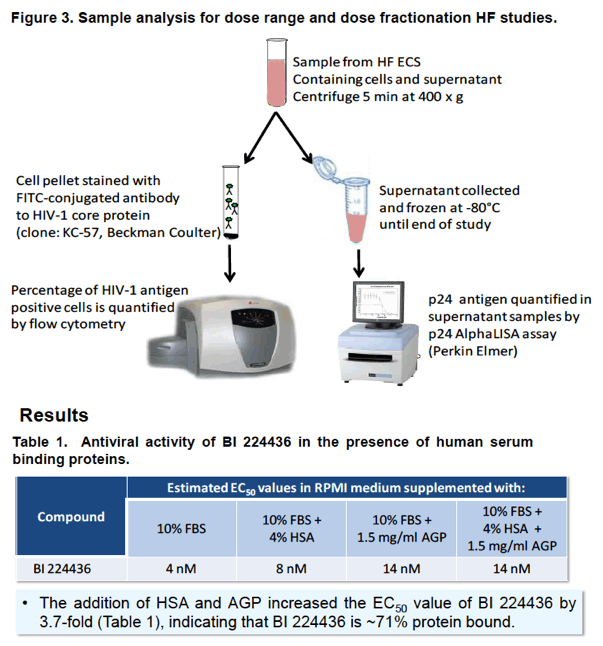
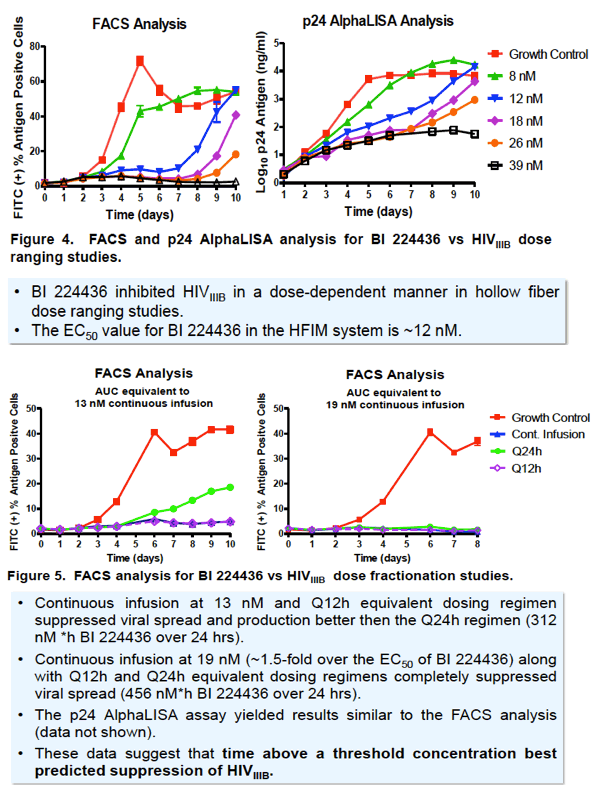
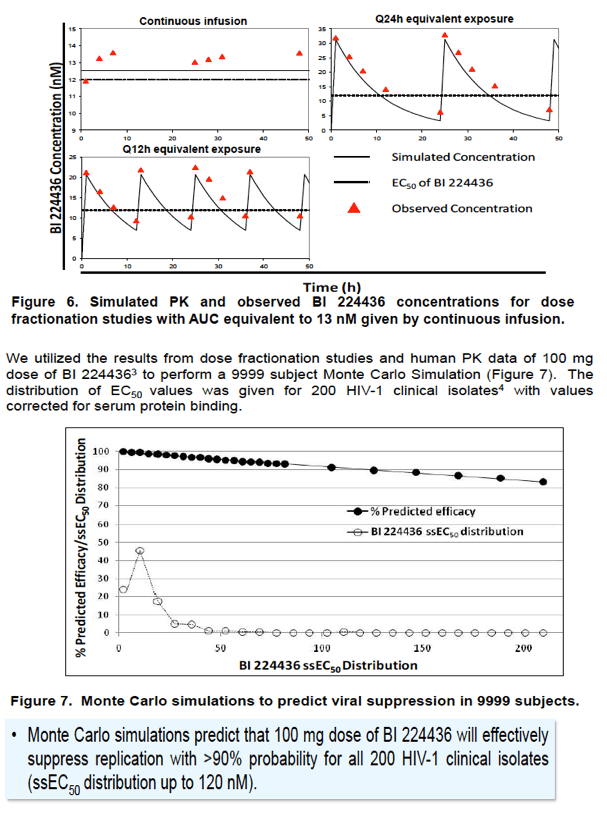
|
| |
|
 |
 |
|
|